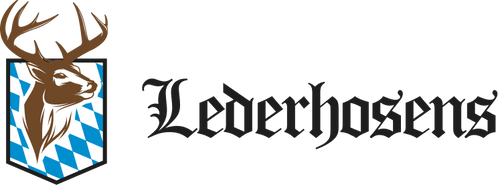Traditional tracht Lederhosen?raditional tracht history and heritage are still kept alive and worn by men in Southern Germany. These traditional garments are not part of the daily wardrobe of modern German men but are a definite choice for folk festivities like Oktoberfest and other folk festivals. The men in knee-length leather trousers, suspenders, and rustic shirts represent traditional clothing, especially during festivities like Oktoberfest. This attire is a reminder of Bavaria’s rich history and vibrant culture.
Origin of Lederhosen in Germany
Lederhosen, which means "leather pants" in German, have a practical origin. Historically, they were worn by men who worked in rural, alpine regions, especially in Bavaria, in the southern part of Germany, as well as in Austria and Switzerland. Leather, as a material, was valued for its durability, flexibility, and protection. Men who worked in the fields, forests, or mountains needed robust clothing that could withstand tough labor and rough weather conditions. Lederhosen fulfilled this need.
Lederhosen are made from soft suede or deer leather. These pants are practical for outdoor work, providing comfort and flexibility while resisting wear and tear. Lederhosen are relatively easy to clean, making them ideal for the labor-intensive jobs performed by farmers and laborers in rural areas. Leather pants also became widely accepted amongst the elite, which led to their popularity.
Lederhosen and Bavarian Identity
While Lederhosen have roots in rural labor, their cultural significance has evolved. Today, they are more than practical workwear; they symbolize Bavarian identity and pride. Bavaria, one of Germany’s 16 federal states, has its unique culture, and Lederhosen have become an iconic representation of that heritage.
Though Lederhosen are traditionally associated with Bavaria, their cultural influence has spread across Germany and even into neighboring countries. Many Bavarians wear Lederhosen during festivals, special occasions, and public holidays, especially during events that celebrate local traditions and customs.
In particular, the annual Oktoberfest, held in Munich, has become a global stage for traditional Bavarian dress. Out of the 6 million visitors, around 80% of local and international visitors don Lederhosen (and Dirndls for women) as part of the festive celebration of Bavarian culture, beer, and camaraderie.
Do People Still Wear Lederhosen in Modern Germany?
The short answer is yes, but with some caveats. While Lederhosen are still worn in Germany, particularly in Bavaria, they are not part of everyday attire for the average German man.. Rather, they are donned during specific cultural events, festivals, and celebrations. Here are some examples of when Lederhosen are worn today:
-
Oktoberfest and Folk Festivals
-
Traditional Weddings and Celebrations
-
Oktoberfest Parade
Modern Adaptations and Variations
Although Lederhosen are closely tied to tradition, they have seen some modern adaptations. Over the years, designers have taken creative liberties with the classic style, introducing variations incorporating contemporary fabrics, colors, and cuts. This has resulted in Lederhosen becoming a fashionable option, even outside traditional contexts.
In recent years, modern versions of Lederhosen made from synthetic materials have been produced to cater to those who want the look without the high cost of genuine leather. Some variations even come in brighter colors or with less intricate designs, making them more accessible to younger generations or international visitors looking for a piece of the Bavarian experience.
Lederhosen are a Tourist Attraction
Interestingly, Lederhosen have become a symbol of German heritage for tourists. Many visitors to Germany, particularly Bavaria, seek opportunities to wear traditional attire during their stay, especially at events like Oktoberfest. Some tourists even purchase Lederhosen as souvenirs, taking a piece of Bavarian culture home. The cultural association of Lederhosen with Germany is so strong that they have become a popular costume choice globally during events that celebrate German or Bavarian culture, even outside of Germany.
Conclusion!
Lederhosen can not be seen daily in modern Germany, especially in the big cities. Trachten for men symbolize the country’s cultural heritage, especially in Bavaria. Many men wear Bavarian leather shorts during cultural festivals, folklore events, and special gatherings. Tracht is the regional pride that is a reminder of Germany's rich history and cultural diversity. German shorts for men offer a unique insight into the spirit of Bavarian identity.
FAQs
1. Why is Lederhosen Important in the German culture?
Lederhosen originated in the Alpine region of southern Germany, where laborers and farmers wore them for practical workwear. Later with the efforts of King Ludwig and others trachten was recognized as the symbol of Bavarian culture and heritage. Today they are worn during festivals, traditional celebrations, and folklore events.
2. Do people wear Lederhosen daily in Germany?
No! Lederhosen is not part of everyday attire in modern Germany. They are generally worn during specific cultural events, such as Oktoberfest, weddings, and traditional folklore festivals., primarily in Bavaria and surrounding regions.
3. Are Lederhosen worn only by men?
In modern times, women also wear lederhosen at events like Oktoberfest. While women’s traditional attire is the Dirndl, some women dress in leather breeches for a more traditional and comfortable look.

